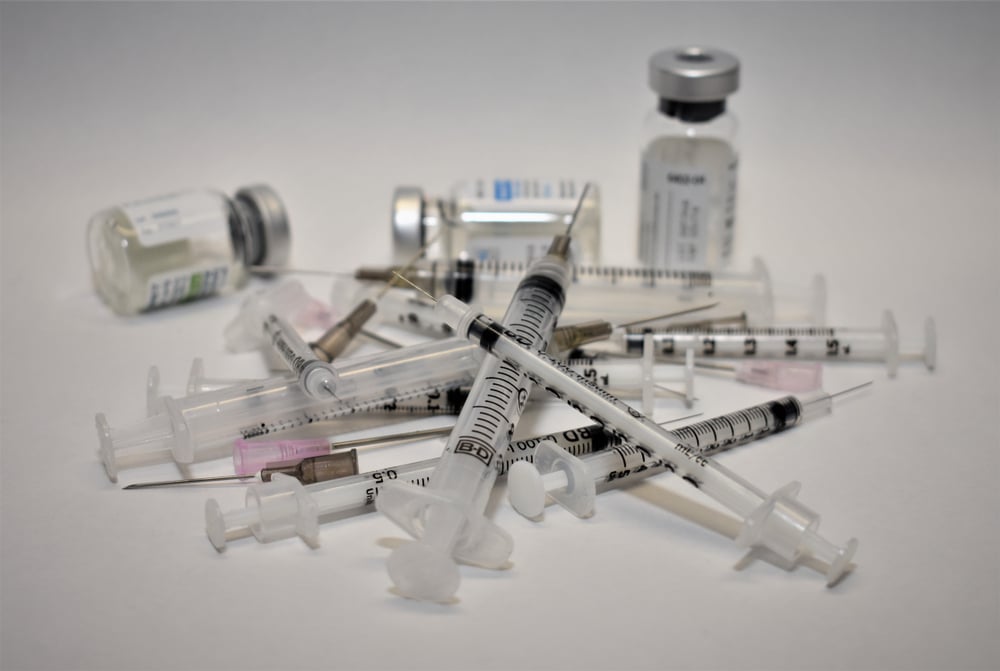IVF Medications Explained

In vitro fertilization (IVF) is has been commonly used as a fertility treatment for more than four decades. IVF works best when multiple eggs are retrieved and able to be fertilized outside of the body in an embryology laboratory. Therefore prior to egg retrieval, patients first undergo a week or so process of controlled ovarian hyperstimulation (COH), in which medications are used to precisely stimulate the growth of follicles in the ovaries and allow retrieval while preventing spontaneous ovulation. The goal of this blog is to summarize the medications used during COH, and their respective role in achieving a successful pregnancy and live birth.
In a regular menstrual cycle, gonadotropin-releasing hormone (GnRH) is secreted from part of the brain called hypothalamus. It goes to another small organ in the brain, the pituitary gland, and stimulates the secretion of two main hormones: follicle stimulating hormone (FSH) and luteinizing hormone (LH). These hormones, in turn, go to the ovaries to stimulate the growth of the follicles that contain the eggs. As the follicles grow, the hormones secreted from the follicles, mainly estrogen, go back to the hypothalamus and pituitary gland and lower the secretion of the hormones coming from these organs, mainly FSH. The purpose of this suppression is to prevent the growth of multiple follicles at the same time. Hence, only the follicle that is “most receptive” to FSH continues to grow despite low serum FSH levels, while others, deprived from the support of FSH, stop growing and die off. This mechanism ensures that human pregnancies are singleton, majority of the time.
During a COH cycle, on the other hand, medications are used to override these physiologic mechanisms in order to grow multiple follicles at the same time. One of the main hormones that is used for this purpose is FSH (for example, Follistim, Gonal-F, etc.) and yes, it is the same hormone that is secreted from the pituitary gland. Because this hormone is given to the patient, it is not subject to the suppression from the estrogen hormone that comes from the follicles. As a result, more, sometimes all available follicles are stimulated to grow. I would like you to pay attention to one detail here: These hormones do not “create” more follicles, but they help grow the follicles that would otherwise die and disappear. Another major hormone that we use during COH is LH. LH helps stimulate the cells (called “theca cells”) that produce the substrates for the estrogen hormone. In order to mimic the LH activity, a hormone called HCG (human chorionic gonadotropin) is used in medications like Menopur that has both FSH and LH activity.
Another class of medication that is used to stimulate follicular growth is called GnRH agonists (Lupron, Synarel, etc.). These medications can stimulate both FSH and LH release from the pituitary gland when used for couple of days. However, after prolonged use, they suppress their secretion. Because of this dual action, they are used both to stimulate follicular growth and also to suppress early ovulation. Apart from GnRH agonists, there are medications that are called GnRH antagonists (Ganirelix, Cetrorelix, etc.). These medications block FSH and LH secretion and are used to prevent early ovulation. When the hormone levels and follicular sizes reach a certain level, we start these medications so that premature ovulation does not occur.
Finally, once the follicles are ready, hormones are used to stimulate final egg maturation. Under physiologic conditions, LH is secreted from the pituitary gland to stimulate egg maturation and ovulation. Hence, medications that mimic LH (like HCG) or that stimulate LH release from the pituitary gland (like GnRH agonists) may be used for this final maturation. HCG is the compound found in medications like Ovidrel, Novarel and Pregnyl and can be administered in different doses to trigger ovulation. On the other hand, GnRH agonists like Lupron or Synarel can also be used, alone or in combination with HCG, to trigger LH release from the pituitary gland to start final egg maturation.
In some circumstances, especially in cases where the egg reserve is low, or in patients who preserve their fertility and have hormone sensitive cancers, medications like Clomid, Letrozole, or Tamoxifen are used from the start of the cycle as an adjunct to the medications that we mentioned above. Here at RMA of New York, we will discuss with you your egg reserve and choose the optimal combination of medications under a protocol that is most appropriate for your personal condition.
